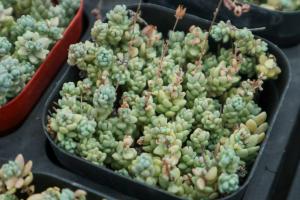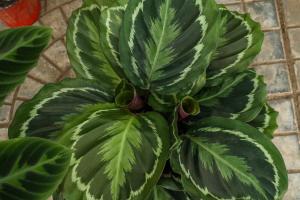Can You Put Rocks on Top of Potted Plants?
If you're an avid gardener or plant enthusiast, you've probably heard of the practice of placing rocks on top of potted plants. But is this really necessary, or is it just a myth? Let's explore the benefits and drawbacks of using rocks in this way.
The Benefits of Using Rocks
Placing rocks on top of potted plants can offer several benefits. For one, it can help retain moisture in the soil by reducing evaporation. This is particularly helpful in hot and arid climates where plants may struggle to get enough water. Additionally, the rocks can help prevent soil erosion by keeping the soil from washing away during heavy rain or watering.
Using rocks in this way can also add a decorative element to your potted plants. They can be chosen to complement the colors and textures in your plants, creating a cohesive and visually appealing display.
The Drawbacks of Using Rocks
While using rocks on top of potted plants can be helpful in some ways, it's not always the best option. One major drawback is that it can make it difficult to see when the soil is dry and in need of watering. The rocks can prevent you from feeling the soil directly and from seeing any moisture on the surface. This can lead to overwatering, which can be harmful to many plants.
Another drawback is that over time, the rocks can actually start to compact the soil in the pot. This can create a hard layer that makes it difficult for water to drain properly. It can also make it harder for the roots to grow and spread throughout the soil, which can stunt the growth of the plant.
Alternatives to Using Rocks
If you're looking for a way to help retain moisture in the soil of your potted plants, there are other options besides using rocks. One effective method is to use an organic mulch like shredded bark or leaves. This can help keep the soil moist while also providing nutrients to the plants as it breaks down over time.
Another option is to simply water your plants more frequently. While this may seem counterintuitive, many plants actually prefer to be consistently moist rather than soaked and then allowed to dry out completely.
The Verdict
So, can you put rocks on top of potted plants? The answer is yes, but with a caveat. While using rocks in this way can be beneficial for retaining moisture and preventing soil erosion, it's important to be mindful of the potential drawbacks. Consider using an organic mulch or adjusting your watering schedule instead.
Ultimately, the decision to use rocks on top of your potted plants should be based on the individual needs of each plant and the growing conditions in your area. With a little trial and error, you'll soon find the best method for keeping your plants healthy and thriving.

 how many times do yo...
how many times do yo... how many planted tre...
how many planted tre... how many pine trees ...
how many pine trees ... how many pecan trees...
how many pecan trees... how many plants comp...
how many plants comp... how many plants can ...
how many plants can ... how many plants and ...
how many plants and ... how many pepper plan...
how many pepper plan...
































